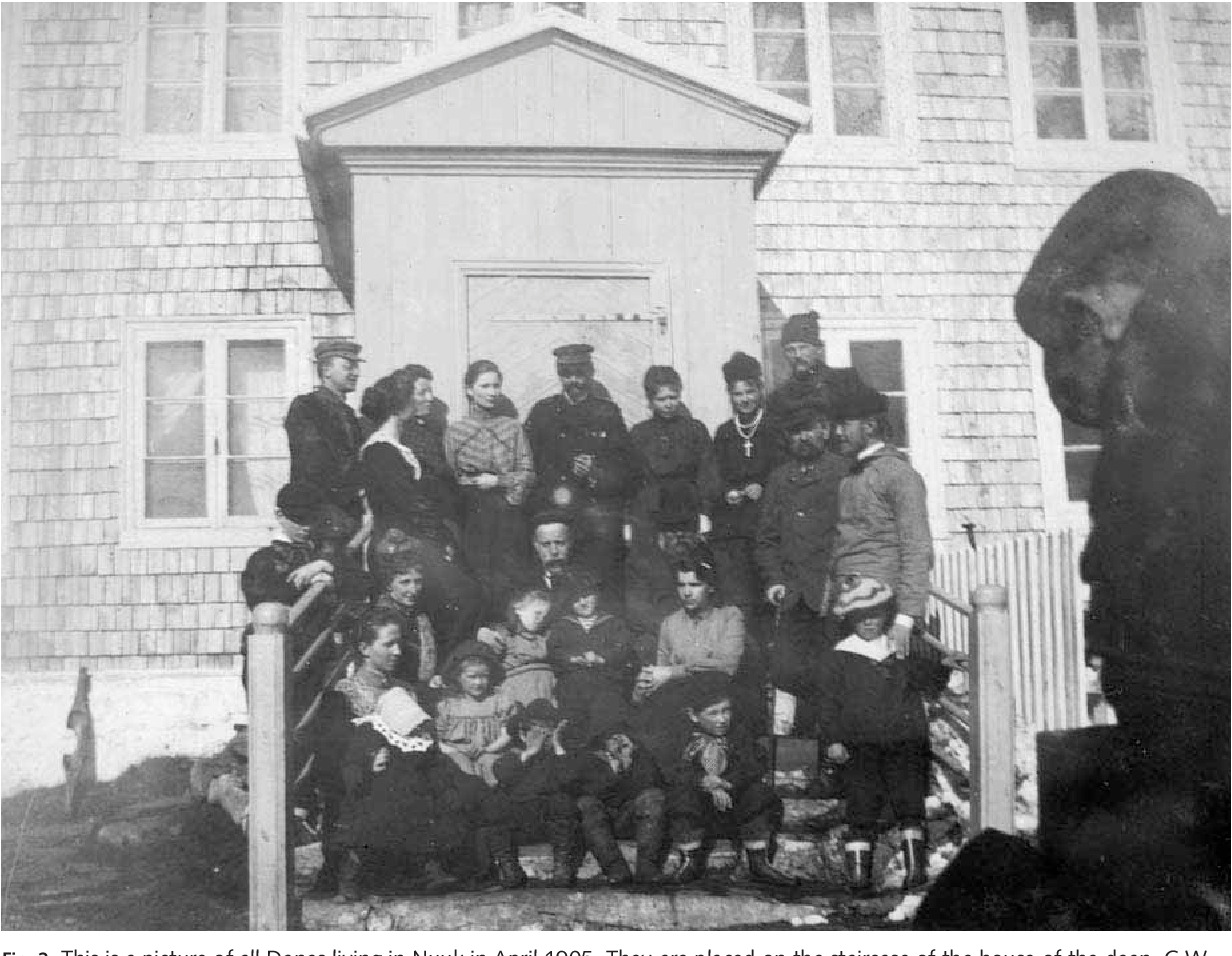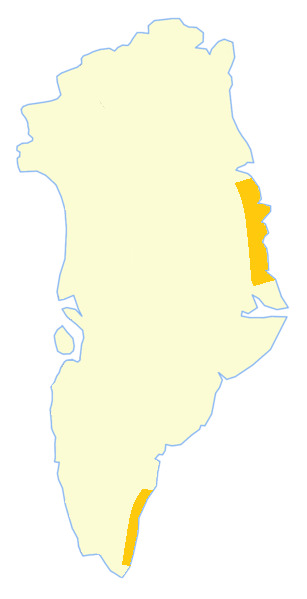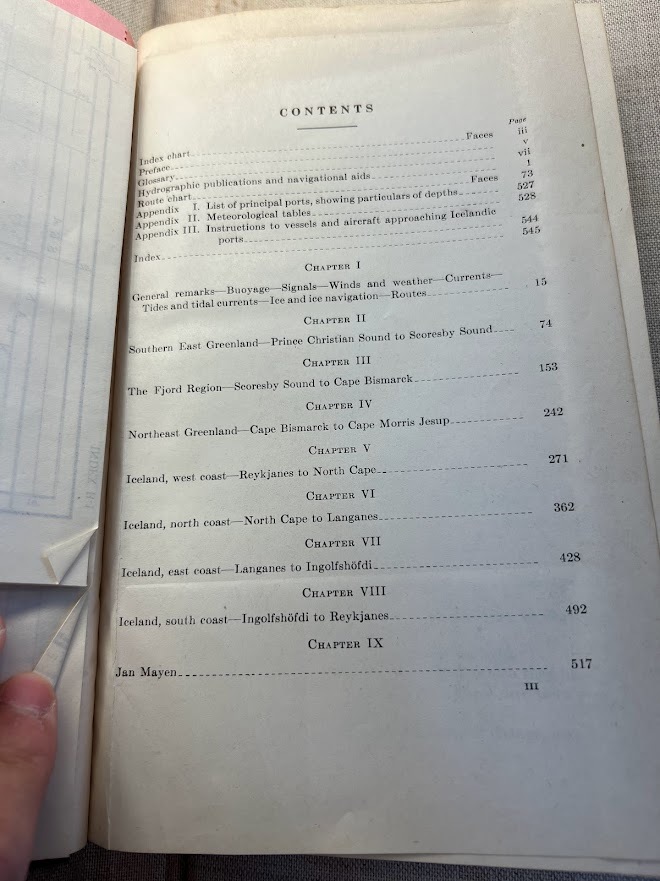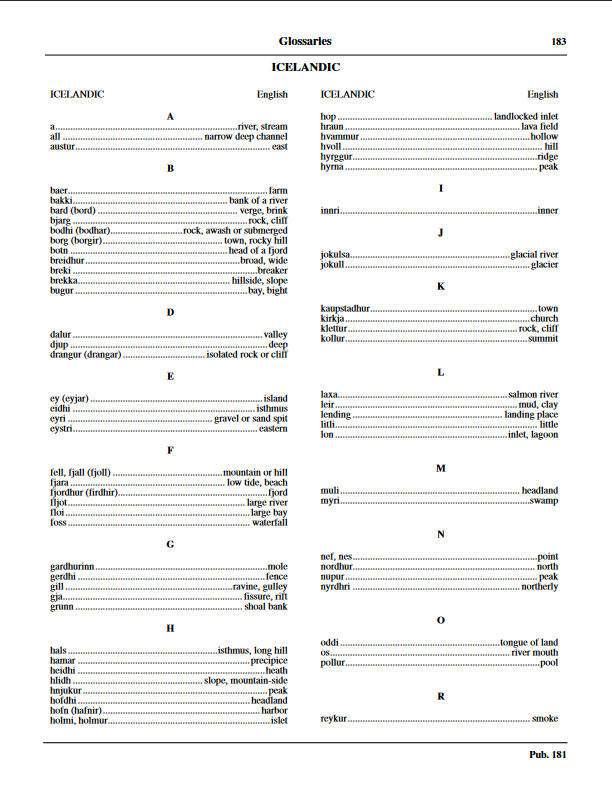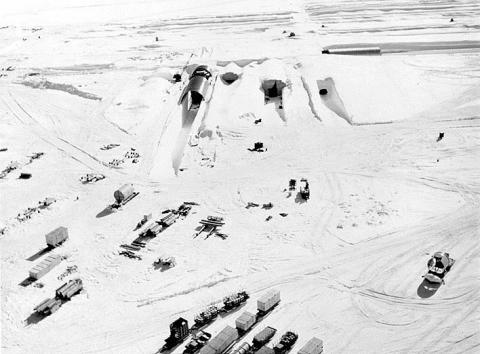Strategic Importance, The End of Exploration, A New Era
By the beginning of the 20th century, Greenland hadn't yet cemented its place as somewhere of global geopolitical importance. It had technically been colonized by Denmark centuries before. Interestingly, though the capital, Nuuk, was established by Danes, very little of the population was Danish [1].
In this era, the biggest geopolitical dispute was whether Greenland should technically be possessed by Denmark or Norway [2].
When Norway became part of Denmark-Norway, ownership transferred to Denmark. However, once Denmark and Norway split into two different countries in 1815, Denmark retained control over the region, even though official documents still put this region as part of Norway. Eventually, Norway abandoned this claim in 1933 [2].
We can see that this Eurocentric view, where Greenland was of little strategic importance because of its removal from geopolitical affairs in Europe, continues here in the US Navy Sailing Guide. In the 1943 edition, we can see off the bat that the guide only covers Eastern Greenland. Not only that, but when we turn to the table of contents, we can also see that only 168 pages cover Greenland, whereas at least 246 pages cover Iceland, despite Greenland’s bigger geographical size. There is also a section that mentions that Greenlanders have “a considerable admixture of white blood,” once again indicating that 20th century navigators considered Greenland most important when in the context of European demographics. Remember that this is a practical guide meant to help the Navy navigate through Arctic waters, so with limited space, every inclusion and omission was chosen for a reason.
If we take a look at a modern edition from 2021, we can see that this trend is completely reversed. Not only does the book cover the entirety of Greenland instead of just the Eastern half, but it also talks about Greenland more than it does Iceland. This reflects Greenland's -- and the Arctic's -- growing strategic importance.
Greenland became much more strategically important during the height of World War II, when Denmark, after occupied by Germany, handed Greenland temporarily over to the US [3]. By the end of World War II, the US had installed 14 new weather stations in Greenland [4] During the Cold War, with Greenland being situated right between the US and the Soviet Union, Greenland became even more strategically important, and was no longer a place just for explorers [4]. The Pentagon described the island as “the world’s largest stationary aircraft carrier,” and it was seen as a launching point for World War III [4]. With warming Arctic sea ice, it was the perfect spot for either world power to begin an invasion.
Throughout the next few decades, the US would continue to exert military control over the region, building bases and weather stations, including the infamous Camp Century [5]. But, with Greenland’s rising strategic importance in the Cold War, the island would never again be seen as just a frontier for exploration.
Sources:
1. Sørensen, Axel Kjær. “Denmark-Greenland in the twentieth century.” (2007).
2. Pihl, Roger. “Eirik Raudes Land.” Store Norske Leksikon, 22 May 2023, snl.no/Eirik_Raudes_land.
3. “History of Greenland.” Encyclopædia Britannica, www.britannica.com/place/Greenland/History. Accessed 24 May 2023.
4. Jex, Catherine. “Denmark’s Cold War Struggle for Scientific Control of Greenland.” ScienceNordic, 29 Jan. 2017, sciencenordic.com/basic-research-denmark-history/denmarks-cold-war-struggle-for-scientific-control-of-greenland/1442100.
5. “Camp Century.” Nuclear Museum, 19 July 2018, ahf.nuclearmuseum.org/ahf/history/camp-century/.

